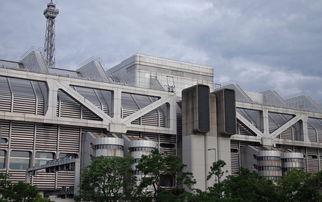As we step into the 21st century, the world is witnessing a transformation in various sectors, and agriculture is no exception. The integration of technology into agriculture, often referred to as "technology agriculture" or abbreviated as "TA," is revolutionizing the way we grow, harvest, and distribute food. This article delves into the potential of technology in agriculture, exploring how it can increase efficiency, sustainability, and food security.
Precision Agriculture
Precision agriculture employs technology to monitor and control field-based activities precisely. It uses GPS technology, drones, and satellite imagery to collect data on crop health, soil conditions, and weather patterns. This information is then used to apply resources like water, fertilizers, and pesticides in a targeted manner, reducing waste and increasing yield.
Internet of Things (IoT) in Agriculture
The IoT connects various devices and machinery on the farm through the internet, allowing for real-time monitoring and management. Sensors placed in the fields can track soil moisture, temperature, and nutrient levels, while IoT-enabled machinery can adjust operations based on this data. This leads to more efficient use of resources and a reduction in environmental impact.
Artificial Intelligence (AI) and Machine Learning
AI and machine learning algorithms can analyze vast amounts of agricultural data to predict crop diseases, optimize irrigation schedules, and even forecast market trends. These technologies can help farmers make informed decisions, leading to higher profits and more sustainable farming practices.
Vertical Farming and Controlled Environment Agriculture (CEA)
Vertical farming and CEA involve growing crops in stacked layers, often in controlled environments. This method uses less land and water than traditional farming and can be located in urban areas, reducing the need for long-distance transportation of produce. Technology such as LED lighting and climate control systems ensures optimal growing conditions year-round.
Genetically Modified Organisms (GMOs) and CRISPR
Advancements in genetic engineering allow for the development of crops that are more resistant to pests, diseases, and environmental stresses. CRISPR technology, in particular, enables precise gene editing, which can lead to higher-yielding, more nutritious, and more sustainable crops.
Robotics and Automation
Robots and automated systems are increasingly being used in agriculture to perform tasks such as planting, weeding, and harvesting. These technologies can work around the clock, increasing productivity and reducing labor costs. They also minimize human error, leading to more consistent and higher-quality produce.
Blockchain Technology
Blockchain can provide transparency and traceability in the food supply chain. It ensures that food products can be tracked from farm to fork, which is crucial for food safety and quality assurance. This technology can also empower small farmers by providing them with access to new markets and fair pricing.
Biotechnology and Nanotechnology
Biotechnology and nanotechnology are opening new frontiers in agriculture. For instance, nanotechnology can be used to develop more effective pesticides and fertilizers, while biotechnology can create biopesticides and biofertilizers that are environmentally friendly.
Aquaponics and Hydroponics
These soil-less farming techniques use water to grow plants, often in a controlled environment. Aquaponics combines fish farming with hydroponics, creating a symbiotic system where the waste from the fish provides nutrients for the plants, and the plants help to clean the water for the fish. These methods use less water and space than traditional farming and can be highly productive.
Drones and Unmanned Aerial Vehicles (UAVs)

Drones are being used for a variety of agricultural tasks, including crop monitoring, planting, and even pollination. They can cover large areas quickly and provide valuable data that helps farmers make informed decisions.
In conclusion, the potential of technology in agriculture is vast and promising. As we continue to develop and integrate these technologies, we can expect to see significant improvements in agricultural productivity, sustainability, and resilience. The future of farming is bright, and it is technology that will light the way.
As an自媒体作者 (self-media author), it's crucial to stay informed about the latest advancements in technology agriculture to provide accurate and insightful content to your audience. By exploring the various aspects of TA, you can contribute to the dialogue on how technology can shape the future of food production and security.









